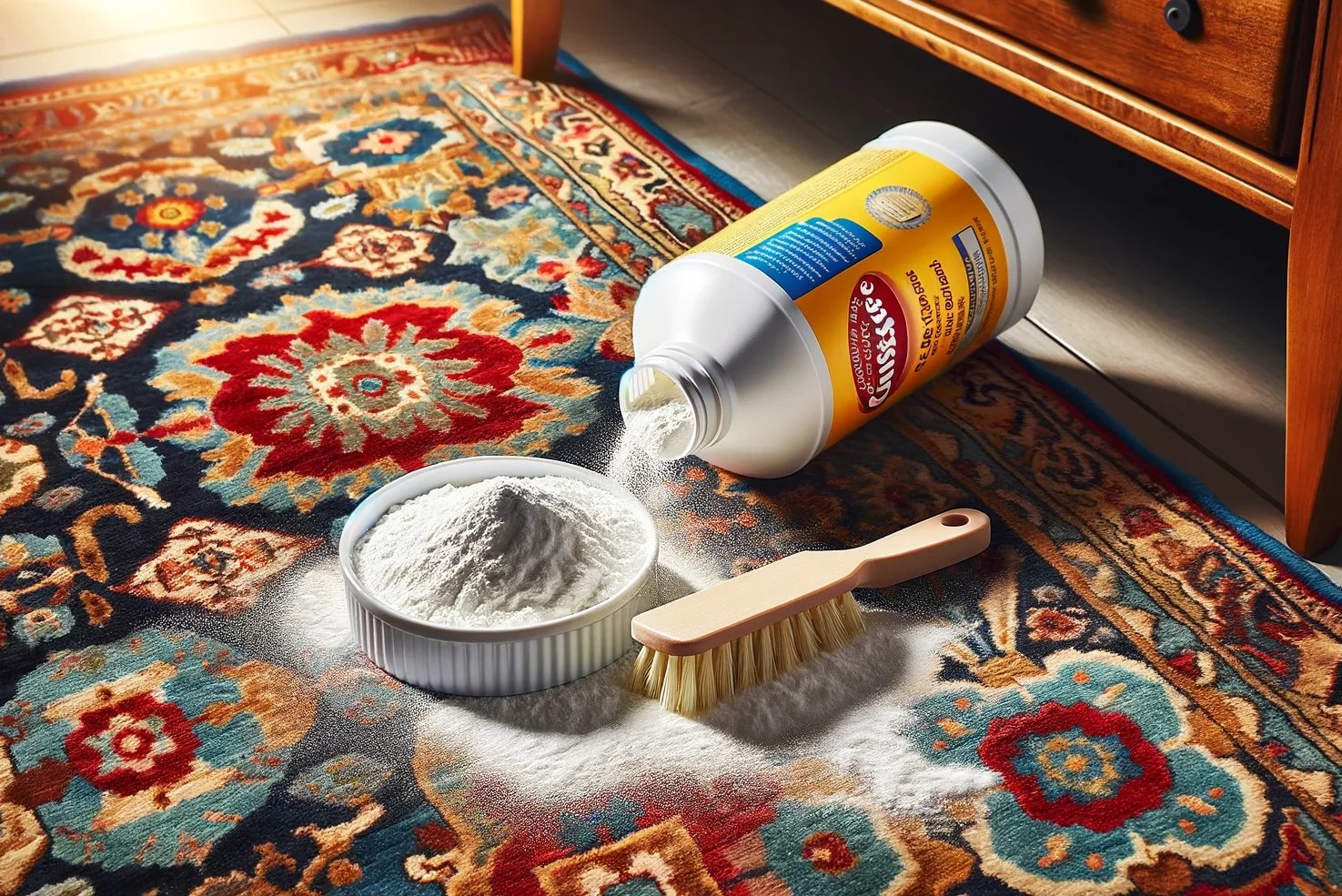Living Room Rugs: The Heart of Your Décor
Understanding Size, Material, and Style
A living room rug serves as the centrepiece of your space, offering a delightful mix of warmth, texture, and visual appeal. It anchors your furniture, defines zones within an open floor plan, and sets the overall mood for your living room décor.
With careful selection and styling, a rug becomes a functional and beautiful element that enhances the entire room.
When considering living room rug ideas, the rug's size, material, and style are paramount.
- Size is crucial: a too-small rug can make the room look disjointed, while a too-large one may overwhelm the space. A common rule of thumb is to choose a rug that allows all furniture to sit comfortably on top, ensuring a cohesive look.
- For material, consider the living room’s usage. Wool rugs, for example, are durable and easy to clean, making them ideal for high-traffic areas. Meanwhile, silk Persian rugs, with their intricate designs and rich history, offer an unparalleled touch of luxury and are perfect for quieter, more formal areas.
- Style-wise, the rug should complement your living room decor ideas. Whether you're drawn to the timeless elegance of Persian and oriental rugs or the simplicity of modern designs, the rug should reflect your personal taste while enhancing the room's overall aesthetic.
Understanding the Importance of Living Room Rugs
Comfort: A soft, plush rug adds an inviting touch underfoot, especially during colder months.
Noise Reduction: Rugs absorb sound, promoting a calmer and more relaxing atmosphere.
Protection for Floors: Rugs protect your flooring from scratches and wear, particularly in high-traffic areas.
Visual Impact: Rugs introduce colour, pattern, and texture, enriching your living room’s aesthetic and tying together your design elements.
Styling Rules and Tips for Living Room Rugs
How to Place and Style Your Rug
The placement of your living room rug can significantly affect the room's overall feel and functionality. The rug should be large enough to anchor the main seating area, with the front legs of sofas and chairs ideally resting on the rug to connect the furniture pieces and create a cohesive space. This setup enhances the room's aesthetic appeal and functionality, promoting a sense of intimacy and conversation among the room's occupants.
When it comes to styling, consider layering rugs for added texture and interest. A smaller, vibrant Persian rug atop a larger, neutral jute rug can create a stunning visual effect, adding depth and dimension to the space.
This technique also allows for the integration of multiple living room decor ideas, showcasing both modern and traditional elements.
Furniture Placement and Accessorizing with Persian Rugs
Is it OK to put furniture on a Persian rug?
Absolutely. Placing furniture on top of a Persian rug not only highlights the rug's beauty but also grounds the furniture, creating a well-defined, cosy seating area. However, it's important to balance the weight of the furniture across the rug to prevent uneven wear.
Accessorizing around a Persian rug involves selecting cushions, throws, and other textiles that complement the rug's colour palette and design.
A harmonious blend of textures and colours can enhance the rug's visual appeal, making the living room more inviting. Moreover, integrating elements that reflect the oriental culture, such as decorative vases or artwork, can add depth and authenticity to the decor, further enriching the living space.
Choosing the Right Rug for Your Style
Choosing the perfect living room rug involves considering your personal taste, décor style, and practical concerns. Here's a breakdown of essential factors to help you find a rug that complements your space and lifestyle.
Rug Materials: A Guide to Comfort and Durability
Wool: A classic choice with natural beauty, wool rugs are soft, durable, and resilient. They resist stains and are naturally fire-resistant, making them a popular option for busy living rooms.
Silk: Luxurious and known for their luminous sheen, silk rugs add a touch of elegance. However, they are more delicate and best suited for low-traffic areas or as statement pieces.
Synthetic Fibres: Synthetic materials like polypropylene and nylon offer affordability, stain resistance, and ease of cleaning. Consider these for family rooms or if spills are a concern.
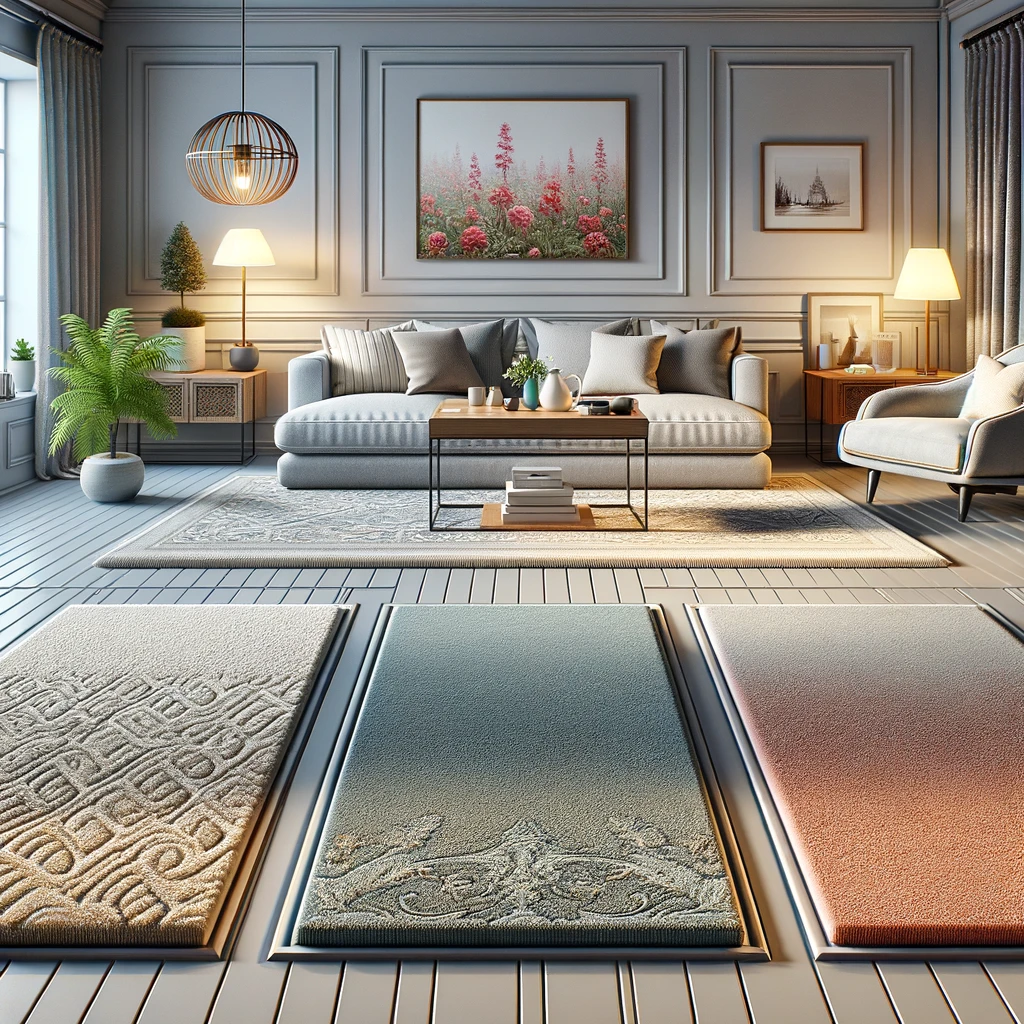
Patterns and Colours for a Cohesive Look
Your rug can be a bold focal point or subtly complement your existing décor. When choosing patterns and colours, consider these helpful tips:
- Focal Point or Neutral Ground: Decide if you want your rug to be the star of the show with vibrant colours and patterns, or subtly blend with your furniture as a neutral background.
- Complementary Colours: Consider the existing colour palette in your living room (walls, furniture, accents). Choose rug colours that harmonize with the space for a cohesive look.
- Pattern Mixing: Don't be afraid to mix patterns! Pairing your Persian rug with geometric prints or floral accents can add visual interest to your décor.
Living Room Rug Size & Placement Rules
The size and placement of your living room rug are crucial for creating a balanced and visually appealing space. While there are no hard and fast rules, following these guidelines will help you achieve the perfect arrangement.
- The "Floating" Rug: If you have a smaller living room or want to define a seating area within a larger space, a rug placed centrally that leaves a border of exposed floor around the perimeter creates an intimate and stylish look. Ensure there's at least 12-18 inches of bare floor between the rug's edge and the walls.
- Legs On, Legs Off: For larger rugs, how much of your furniture sits on the rug depends on your desired style. You can have all furniture legs on the rug for a cohesive feel, just the front legs of furniture for a slightly layered look, or no furniture on the rug for a more modern aesthetic.
- Impact on Space: Smaller rugs can make a room feel cosy, while larger rugs create a sense of spaciousness. Consider the proportions of your living room and choose accordingly.
Placement Tips for Common Furniture Arrangements
- Sofa and Chairs: Place your rug so at least the front legs of your sofa and armchairs rest on the edge. This visually anchors the furniture and avoids a "floating" appearance.
- Coffee Table: Ideally, your coffee table should fit entirely on the rug. If not, at least the front section of the table should rest on the rug.
- Dining Table: Ensure your rug extends far enough that chairs remain on it even when pulled out for sitting.
Joe Rugs - Carpet Expert
Hello! I'm Joseph Rugs, the founder of CarpetJoe.com and your guide through the intricate world of carpets. Born and raised in London with a deep-rooted passion for art and culture, I've explored the globe to bring the rich tapestry of carpet weaving right to your screen. My academic background in arts and humanities from Oxford has fueled my curiosity, leading me to uncover the stories behind every knot and weave. As a family man, my adventures are shared with my loved ones, enriching our lives with every piece of art we encounter. Join me as we explore the beauty and craftsmanship of carpets together.
Styling Your Living Room Around the Rug
Think of your living room rug as a powerful design element that can inspire the rest of your décor choices. Here are some tips for creating a cohesive and stylish look.
The Rug as a Starting Point
If you're starting with a rug you love, draw colours and patterns from it to inform your furniture, accent pieces, and artwork selections. This creates a sense of harmony throughout the space.
Layering Rugs for Visual Interest
Don't be afraid to experiment with rug layering! A smaller patterned rug placed over a larger, neutral rug adds a touch of personality and depth to your décor. Play with textures and subtle pattern variations for a designer look.
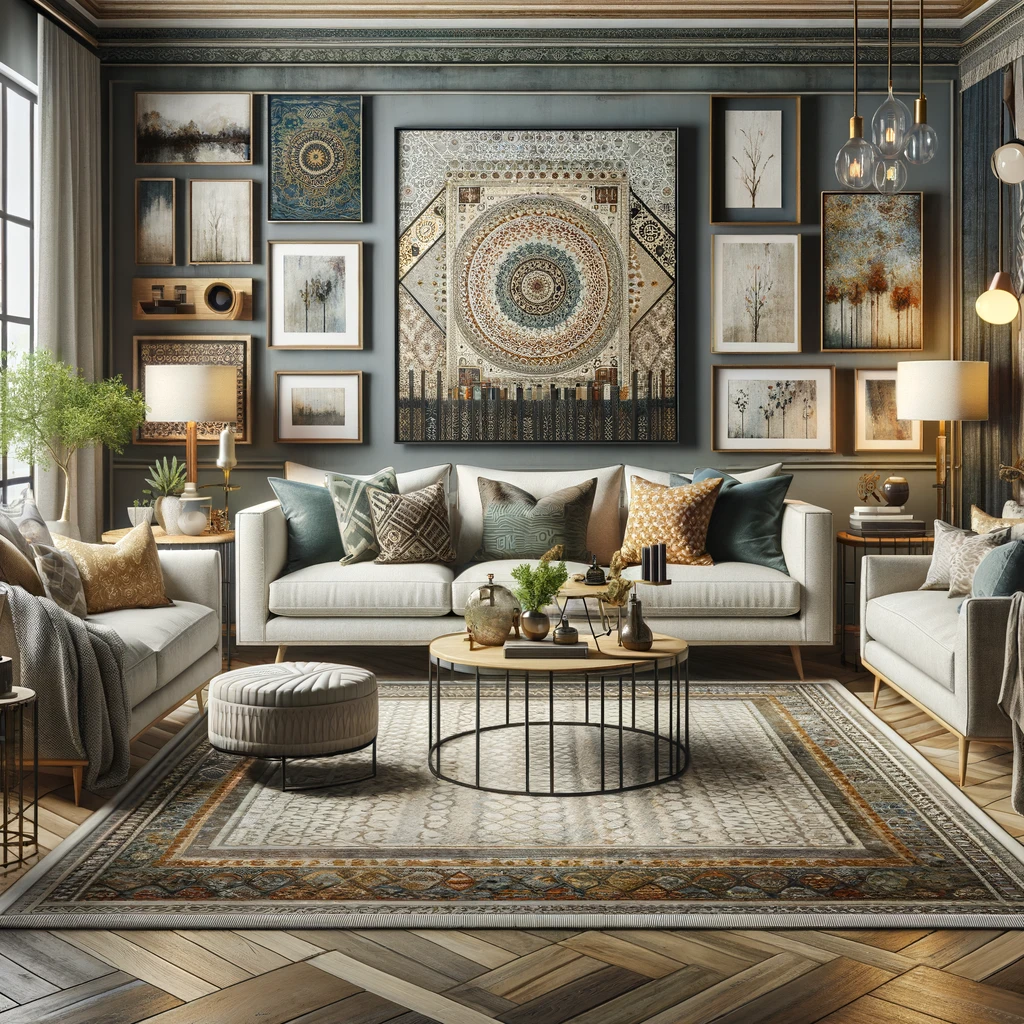
Cushions, Throws, and More
- Coordinate Colours & Textures: Choose cushions and throws that echo the colours and textures of your Persian rug. This ties the elements together even if patterns don't directly match.
- Introduce Contrasts: For a bolder look, consider throws or accent pillows in contrasting colours and textures to add visual interest against your rug.
Explore Carpet Home Decor Ideas
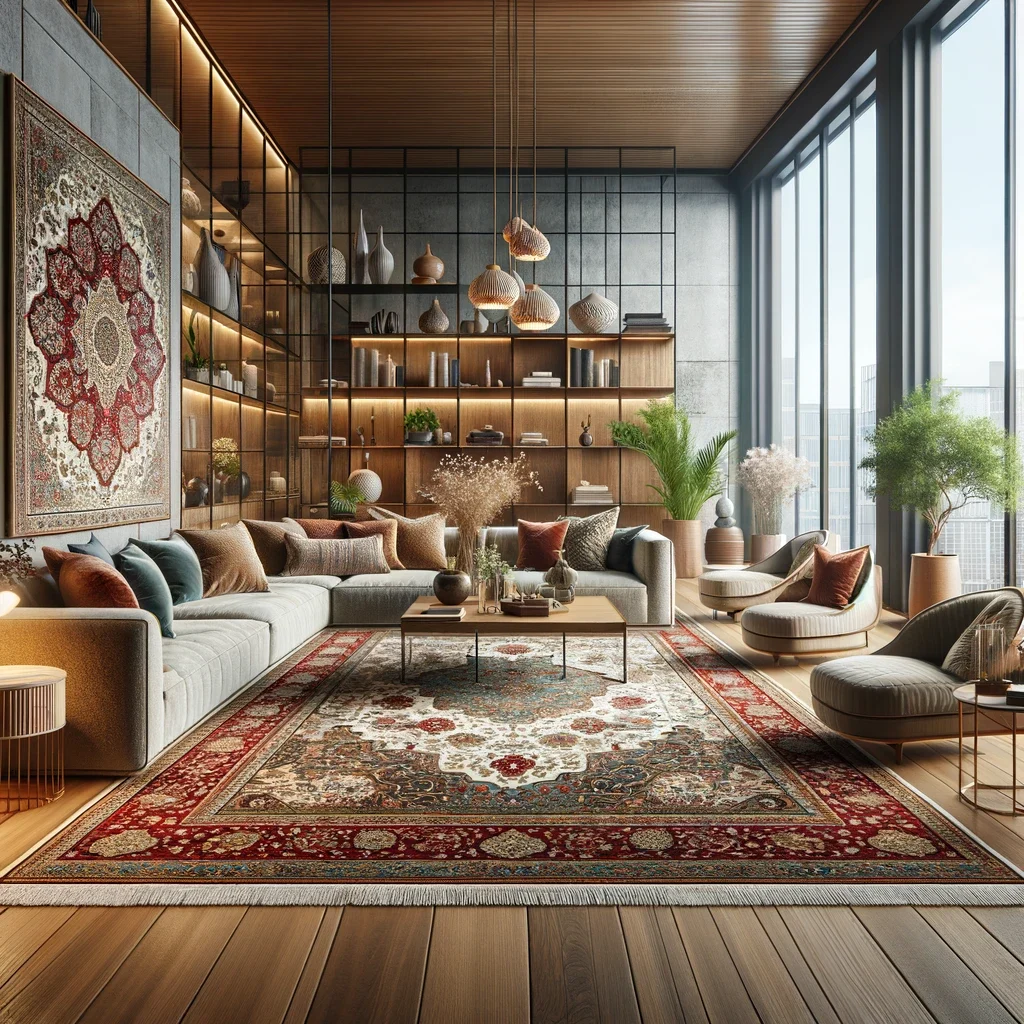
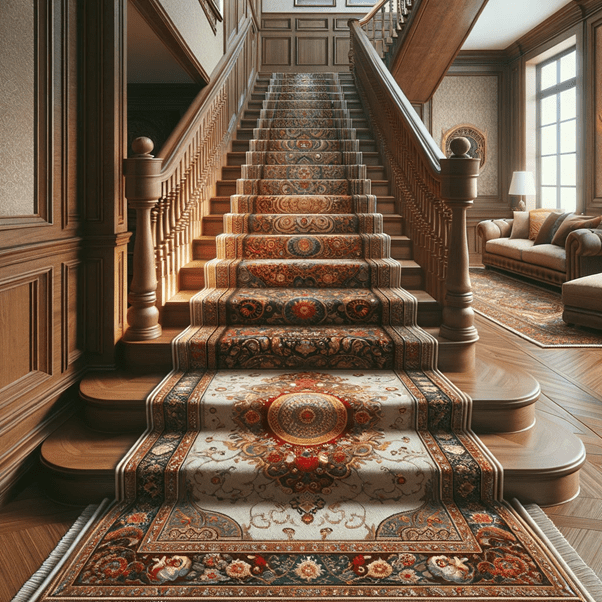
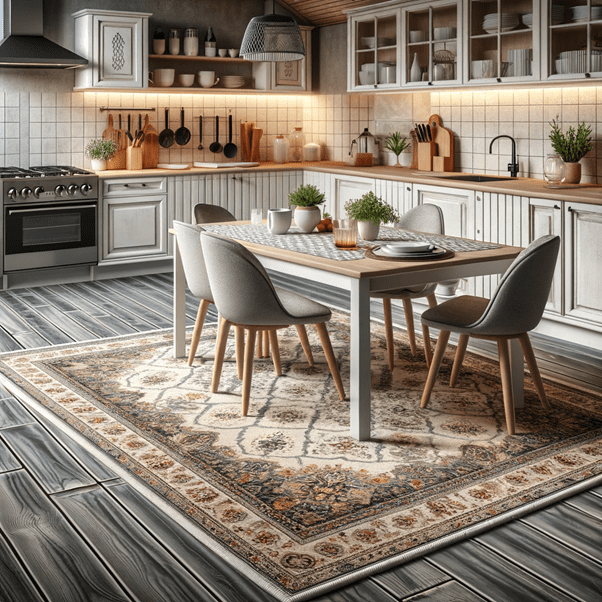
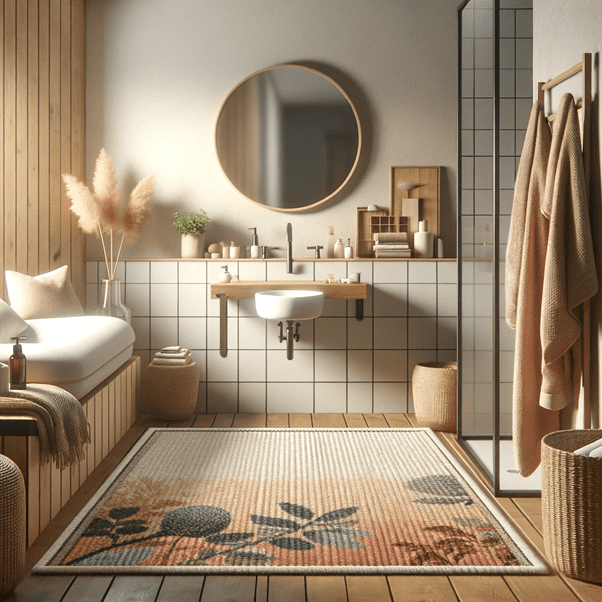
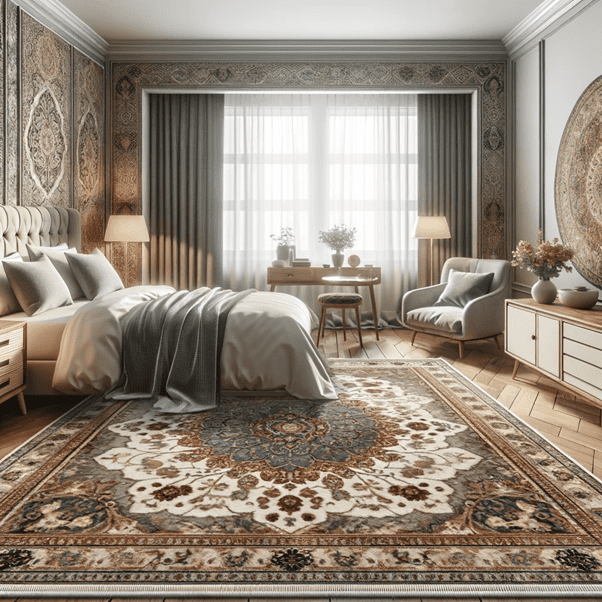
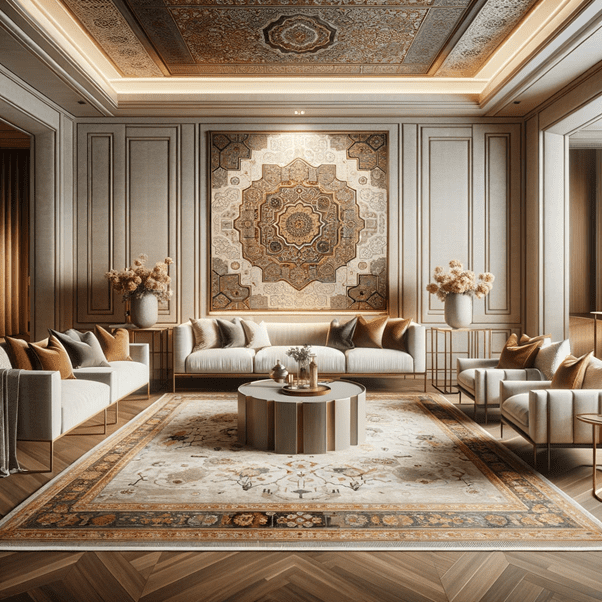
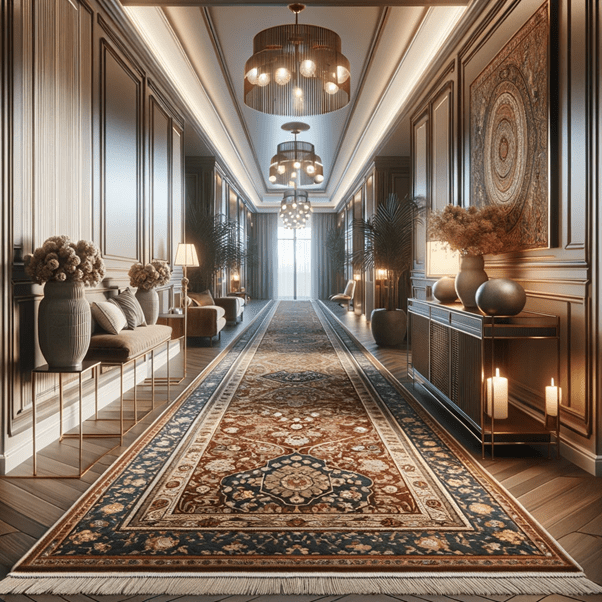
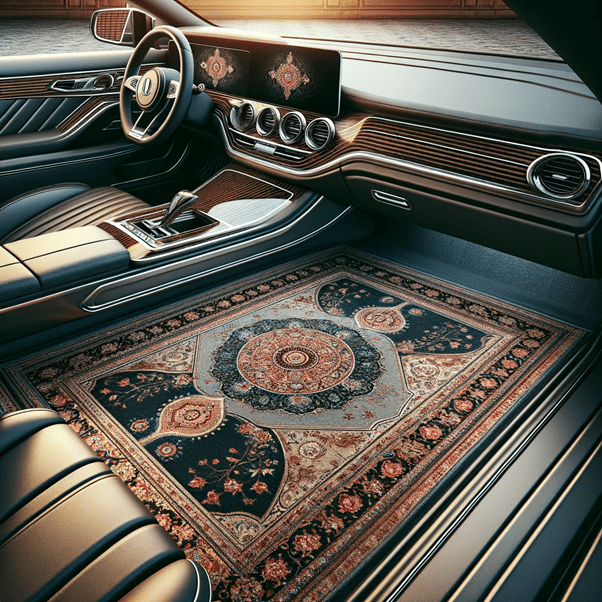
Carpet Repair & Restoration Guides
Carpet damage can range from minor issues like small burns or stains to more significant problems such as large tears or widespread wear.
Identifying the type of damage is the first step in determining the most suitable repair method.
Master carpet repair with our guides. Learn about fixing burns, holes, and wear in carpets and rugs, including DIY patch repairs and professional restoration tips.
Frequently Asked Questions
The best type of rug for a living room depends on your decor style, usage, and preference. Persian and oriental rugs are popular for their durability, intricate designs, and rich history, making them a luxurious addition to any living space.
A general rule for rugs in living rooms is to choose a size that allows for at least the front legs of all furniture pieces to rest on the rug, creating a cohesive and inviting space.
The color of a living room rug should complement the overall color scheme of the room. Neutral colors offer versatility, while bold colors can serve as a focal point.
Style your living room rug by coordinating it with the room's color scheme and decor. Use it to define seating areas, add texture, and enhance the room's aesthetic appeal.
Patterns that complement Persian rugs include solid colors, simple geometric patterns, or subtle floral motifs that do not compete with the rug's intricate design.
Yes, it's perfectly acceptable to place furniture on a Persian rug. This can help anchor the space and create a cohesive look.
Cushions in colors that are present in the Persian rug or in complementary hues work well. Choose textures and patterns that harmonize with the rug's design.
Enhance your living room carpet by keeping it clean, using rug overlays for added interest, and coordinating your room's decor to complement the carpet.
The best color for a living room carpet depends on the room's size, lighting, and color palette. Light colors can make a room look larger, while darker colors add warmth.
Carpet in the living room can be a good idea for added comfort, warmth, and noise reduction, making the space more inviting.
Light-colored carpets, such as beige, light gray, or cream, can make a living room appear more spacious and brighter.





